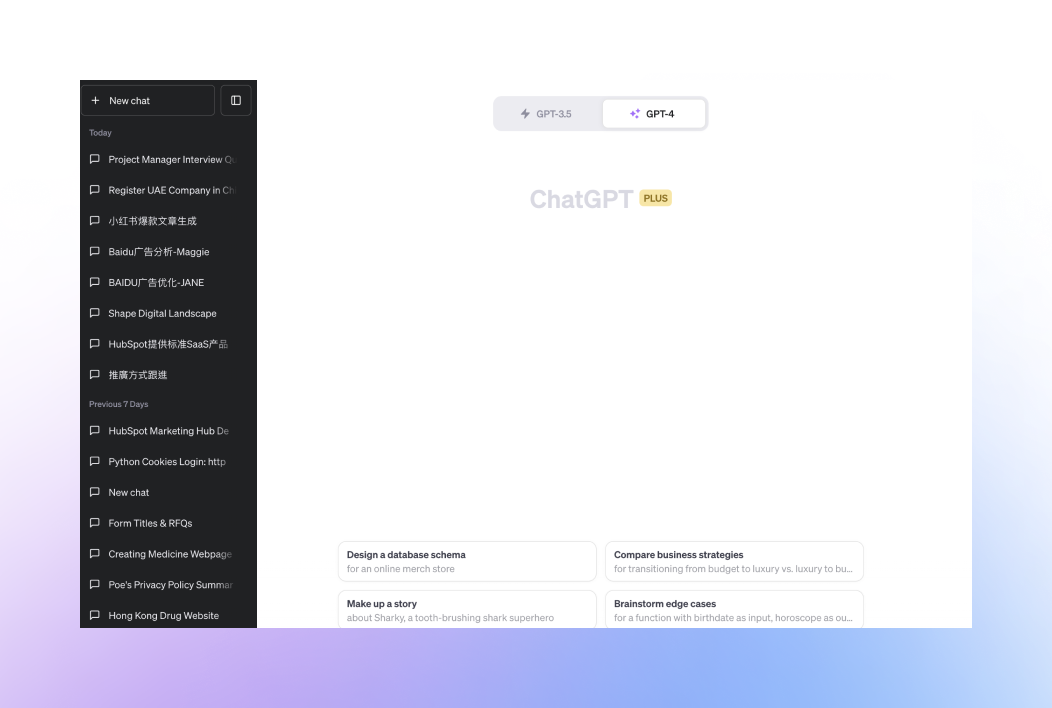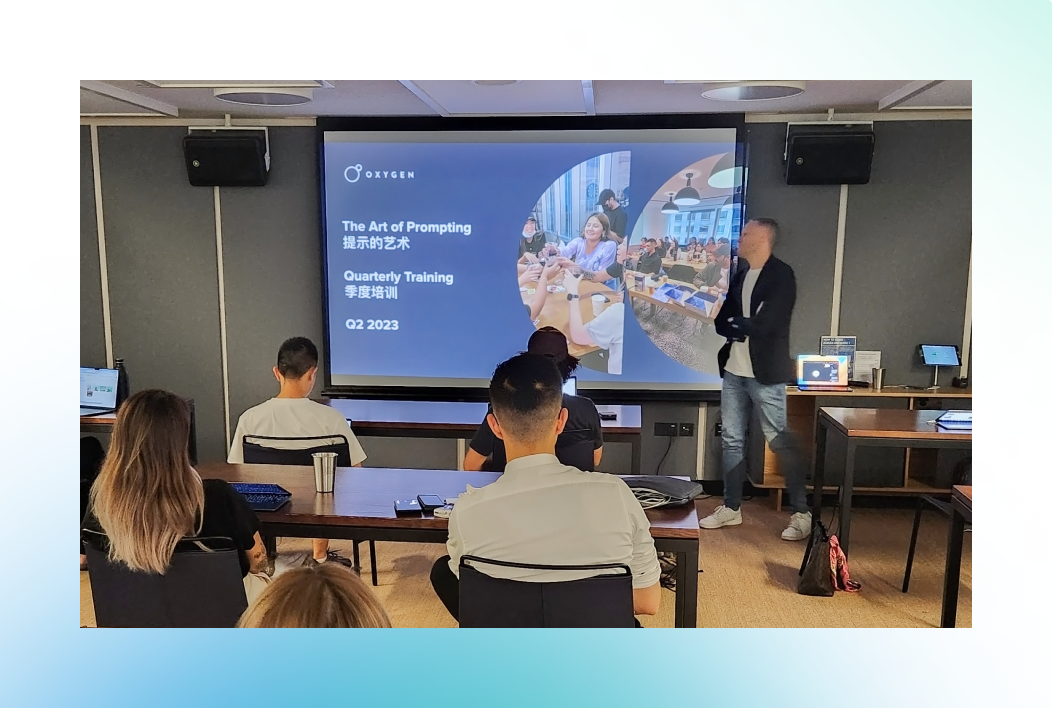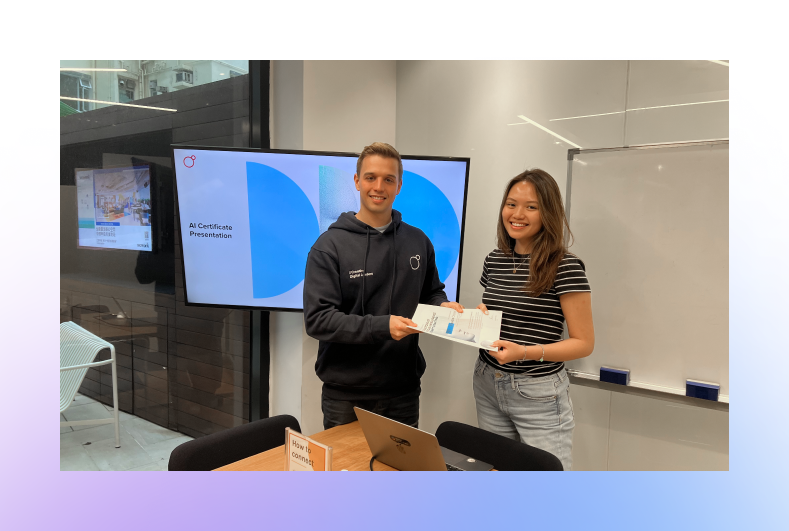CASE STUDY
Oxygen achieves massive company-wide productivity increase through AI (GPT-4) integration
As pioneers in the tech space, Oxygen quickly recognised the untapped potential of OpenAI's GPT-4, not just in English but also in Mandarin and Cantonese. This case study delves deep into Oxygen's accelerated adoption of GPT-4, how we reshaped our content creation dynamics, supercharging efficiencies and how we are setting a benchmark for the industry in the region.

How we facilitated learning and adoption

1. Business-wide access to the best tools
We evaluated all of the AI LLM tools available and came to the clear conclusion that GPT-4 provided the best possible quality for the team with direct access (instead of through another platform that uses GTP-4 like POE).

2. Group training sessions
Each month, we ran multiple AI training sessions via video call and in-person during our team events. These started quite basic, on understanding prompts and how to use the interface… eventually progressing to be more advanced, covering topics like token limits, code interpreter mode and mermaid coding via GPT.
.webp)
3. Company-wide buy-in
Everyone at Oxygen, regardless of role or position, was encouraged to use GPT as much as possible to improve efficiency without impacting quality. Managers were required to be experts in AI to provide better training and help with any questions the rest of the team might have.
.webp)
4. AI Charter
We drafted an AI Charter for our team to sign. Essentially, making it clear that while AI use is encouraged, misuse will not be tolerated. This document also clarifies that employees are responsible for ALL AI outputs and, therefore, must personally check everything written by ChatGPT. By signing this charter, our team also agrees that all content must have some element of human editing or influence not to seem generic or a departure from our brand tone of voice.

5. AI Certification Program
We have developed two certification programs, as the first had to be rewritten 2 months later due to all of the changes within the industry and the tools we were using. These exams test knowledge of the technology behind AI, understanding of the tool, and best-practise ways to use AI to generate amazing results.
Project Management Data
The data on the right is a raw export from our project management system. We looked at hundreds of separate tasks and thousands of collective hours logged to get this data. We focused on one of our core deliverables, which, while sold often, has rarely been profitable. While the below example is just one of many deliverables at Oxygen, further digging into the data showed similar (if not better) results for other tasks.

Average time logged per specific deliverable
we found that AI training and implementation led to a 48.5% reduction in time spent on one of our core services.
We further clarified with project managers, and there was no apparent decrease in quality or increase in client revisions during this period of change. Content from our latest campaign (Client #3) is also 23% more effective for traffic generation than our previous campaign, written manually before AI implementation.
Client #1: Average time logged
Before
10h 43m
After
6h 53m
Client #2: Average time logged
Before
12h 16m
After
4h 40m
Client #3: Average time logged
Before
6h 13m
After
3h 32m
Total Average
Before
9h 44m
After
5h 01m
Quantitative Results

Metric: Time spent brainstorming content ideas each week
There was an increase of approximately 26.6% in respondents who spent "less than 5 hours" each week brainstorming content after the AI implementation compared to before.

Metric: Time spent creating written content each week
There was an increase of approximately 26.8% in respondents who spent "less than 5 hours" creating written content each week after the AI implementation compared to before.

Metric: How often do you feel overwhelmed with work?
There was a decrease of approximately 49% in the respondents who said they 'often' feel overwhelmed after AI implementation compared to before.
Qualitative Results
Not satisfied with the results purely from a time-saving perspective, our team was also surveyed on their confidence in creating their own quality content and the quality of their teammate’s work since AI implementation.
Note that responses for this survey are from a highly self-aware team that are always seeking to improve their writing skills.
Metric: Confidence level in creating high-quality written content without peer review
| Before AI | After AI | |
|---|---|---|
| Extremely Confident | 5.3% | 6.7% |
| Somewhat Confident | 52.6% | 53.3% |
| Unsure | 26.3% | 33.3% |
| Not that confident | 15.8% | 6.7% |
Metric: Confidence in colleagues’ ability to create high-quality written content without peer review
| Before AI | After AI | |
|---|---|---|
| Extremely Confident | 5.3% | 6.7% |
| Somewhat Confident | 52.6% | 73.3% |
| Unsure | 42.1% | 20% |
| Not that confident | 0 | 0 |
Impact on the team
What Our Team Are Saying
Our commitment to AI implementation shines through as we continually better ourselves and strive to give our clients the best service.

AI has greatly impacted my role in HR, enabling me to create growth paths, training plans, and L&D strategies more efficiently. It has also allowed me to provide better recommendations and strategic plans as AI can analyse a situation or data much faster than I can.

HRBP

ChatGPT has improved my writing skills and has been able to produce high-quality, multi-angle content efficiently. It has dramatically improved my work efficiency.

Junior Marketing Exec

Before, I executed the work and used technology to review the output. Now technology executes the work, and I review the output.

Associate Strategist

It has definitely changed the way I perceived my role. Every role today is replaceable by anyone who is abreast with the latest AI tech. In the coming year, there are only two ways to sustain - Stay Relevant or Vanish.

Project Manager
.svg)
Key learnings & challenges
- Practical use of the tools and peer review of output was the fastest driver of AI adoption and proficiency. Teams could quickly compare results and help colleagues find flaws and solutions by using AI. Review sessions were an important part of this and without oversight from management, this wouldn’t have happened so quickly.
- Only giving teams access to the tools is not enough. After suggesting that many of our clients start using ChatGPT, we found that the quality of their output decreased as they didn’t have sufficient training to get good results or even to benchmark what a good result might be. Teams must understand how to use the AI tools, and which tasks might not be appropriate for automation in this way, in order to get an optimal result.
- Management should never penalise someone for just using ChatGPT for a task. But must always penalise someone if the quality of that output is not good enough. Ultimately, they are responsible for that output, and a response like “Well, that’s what ChatGPT gave me” will not suffice.
Ready to get started?
As a digital marketing agency and HubSpot partner in Hong Kong. we are uniquely positioned to help bridge the gap between the East and West.